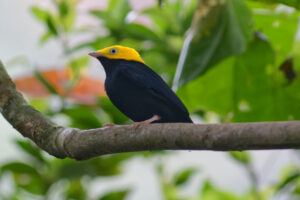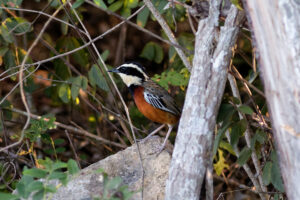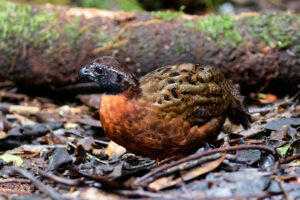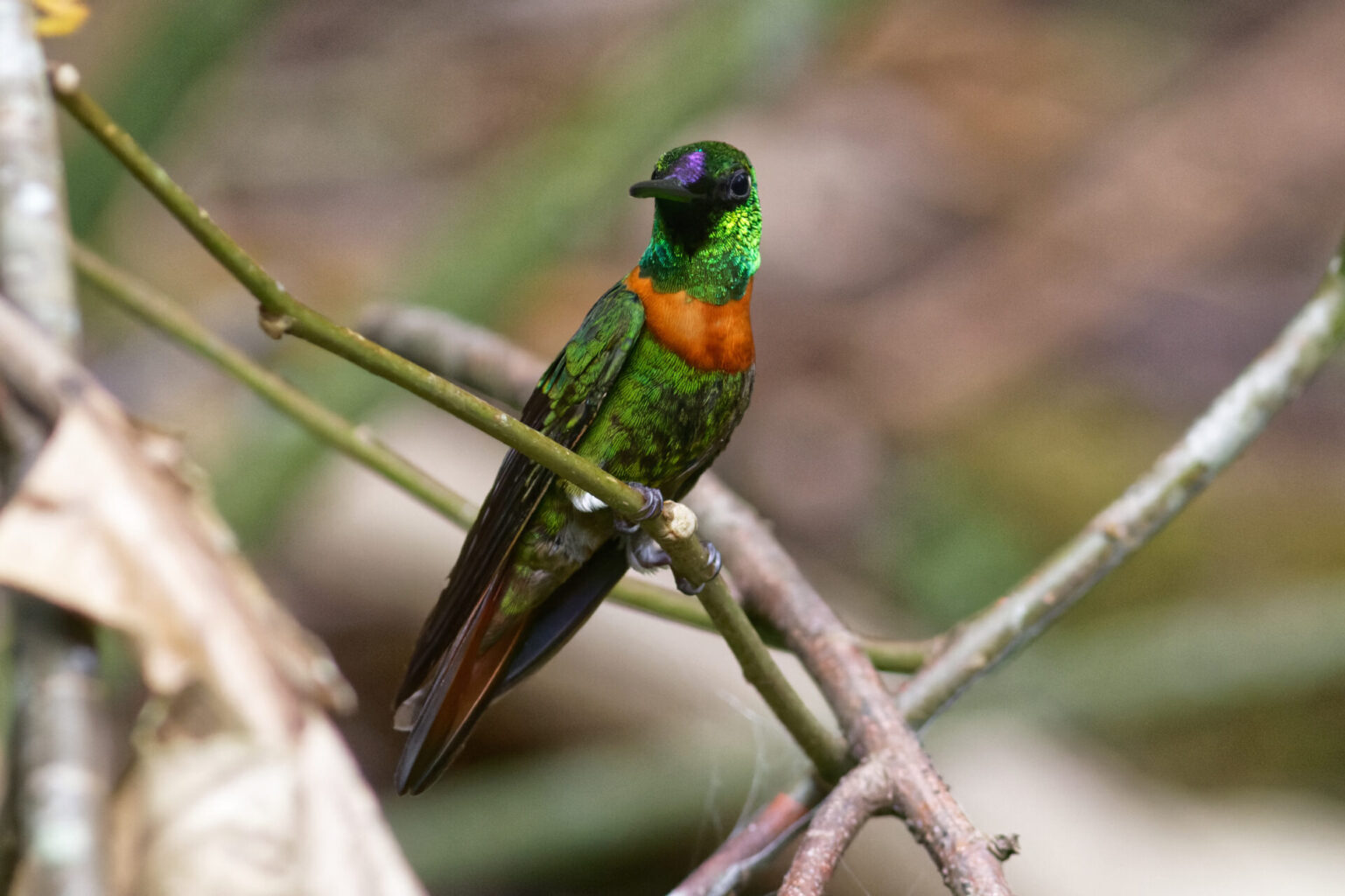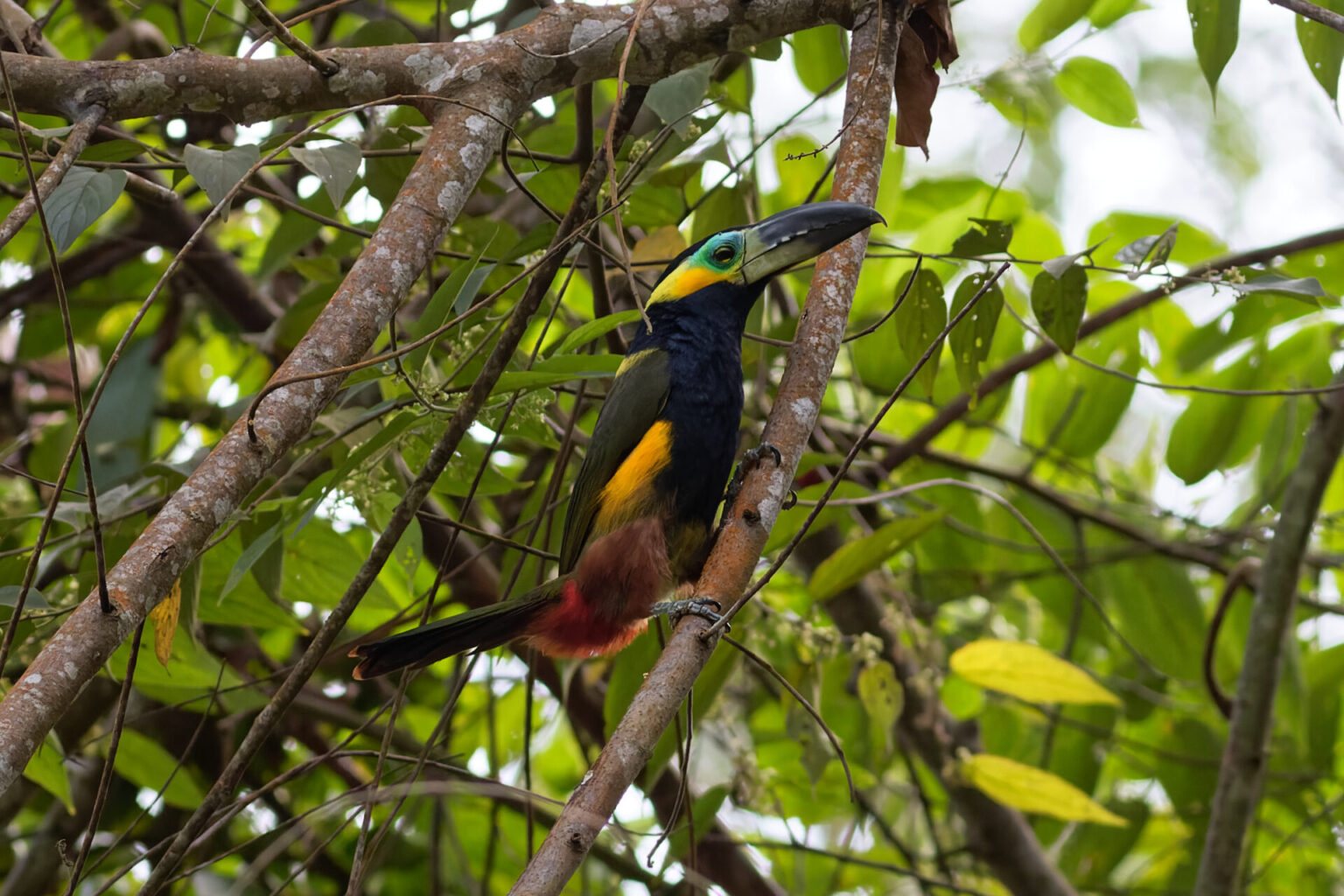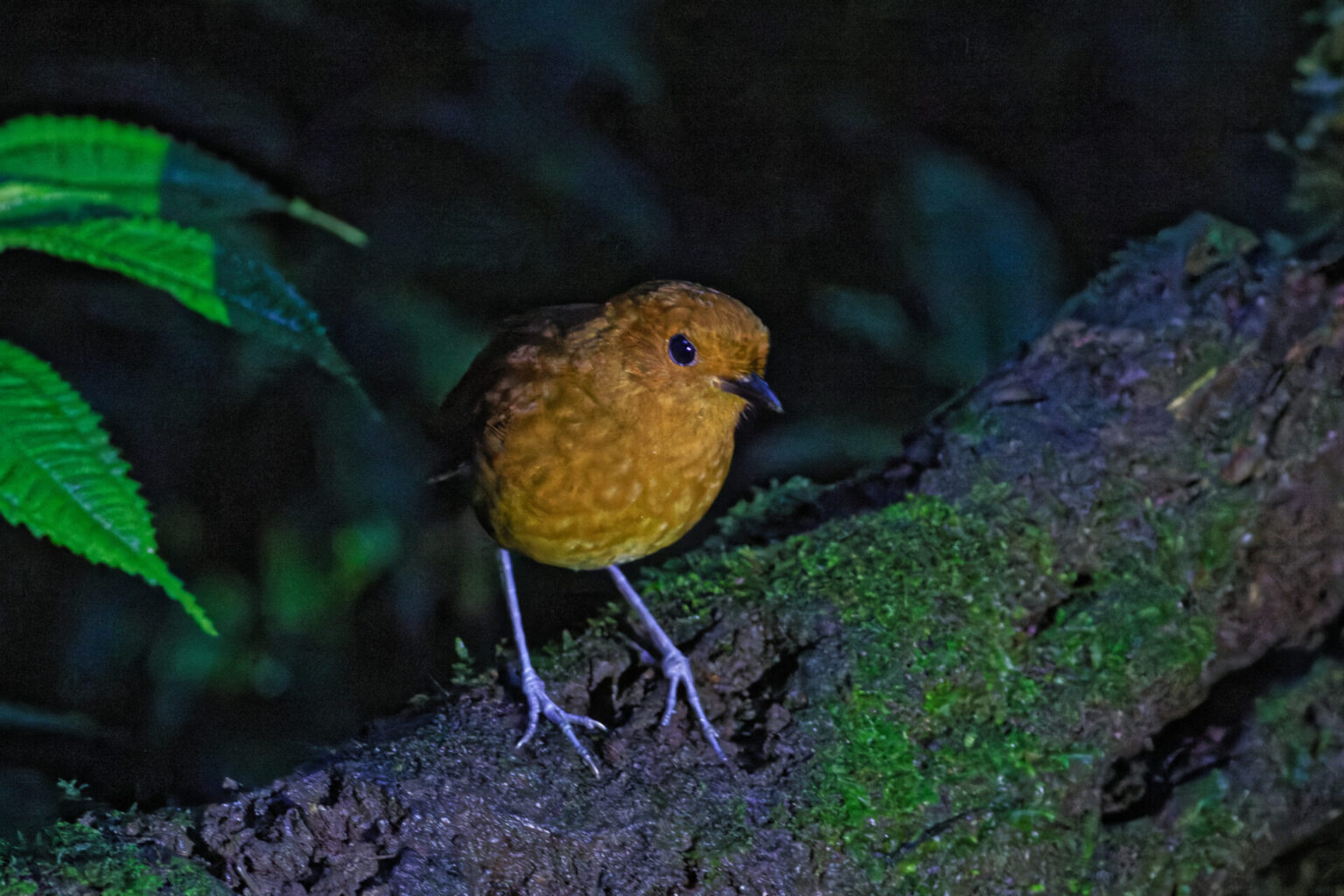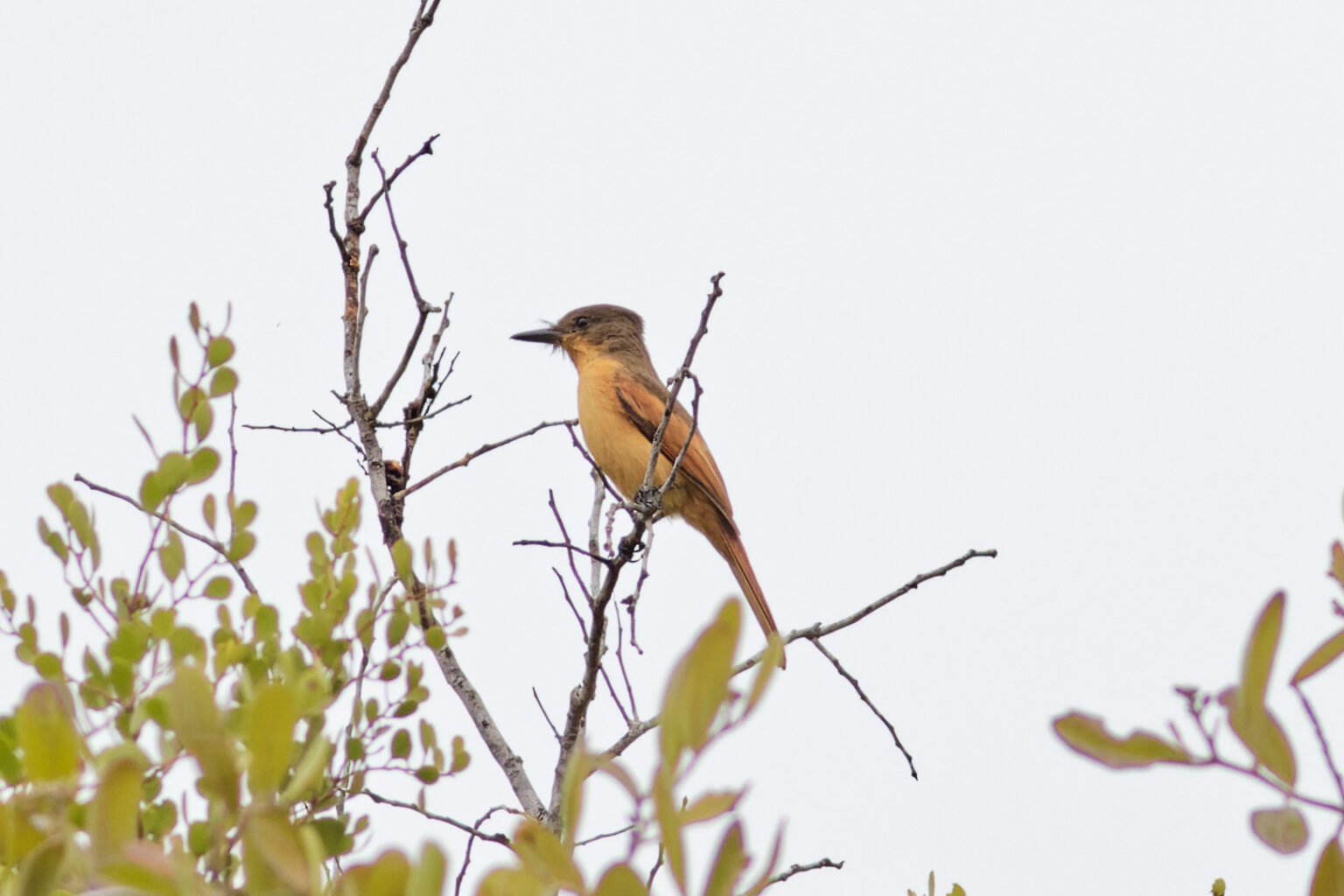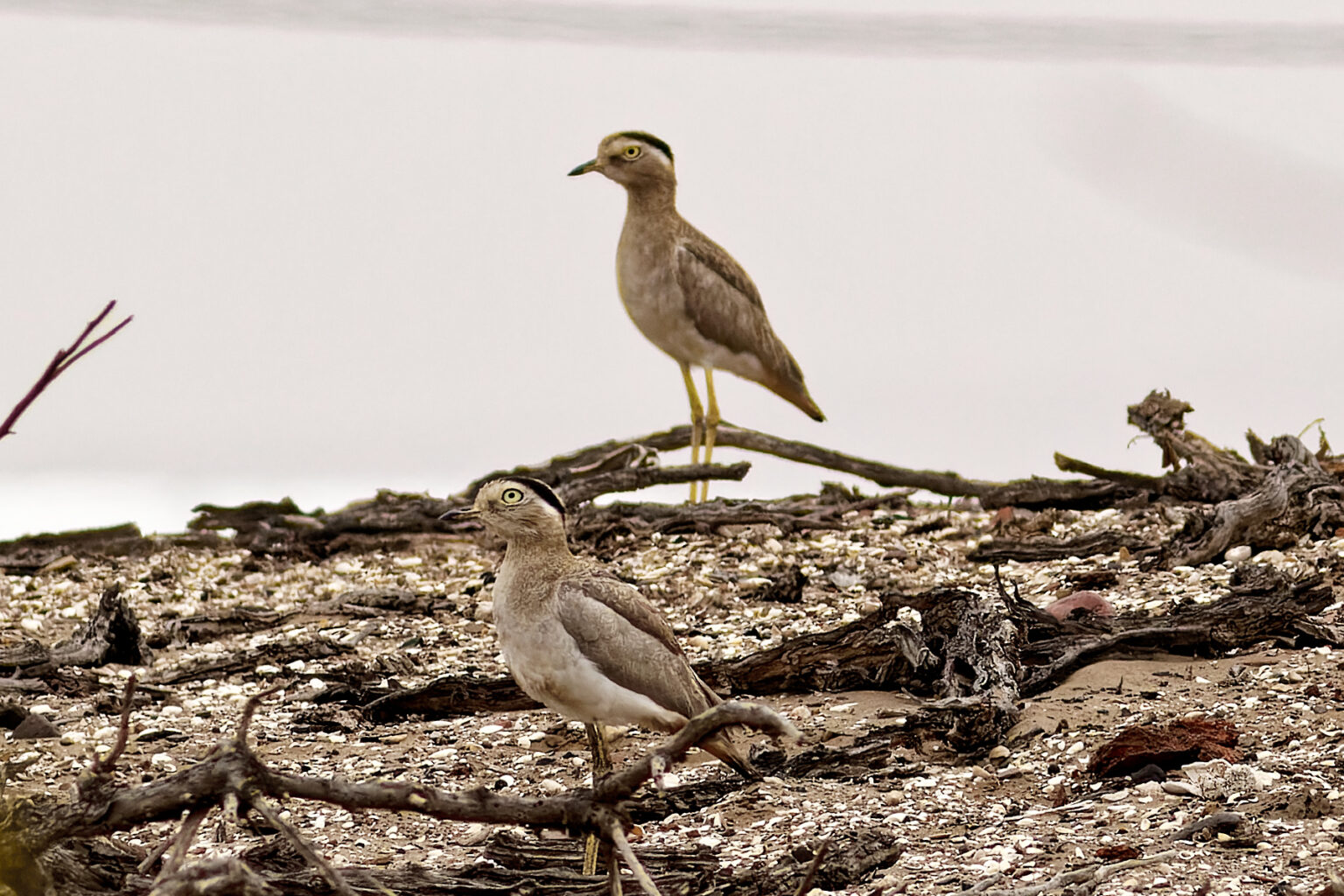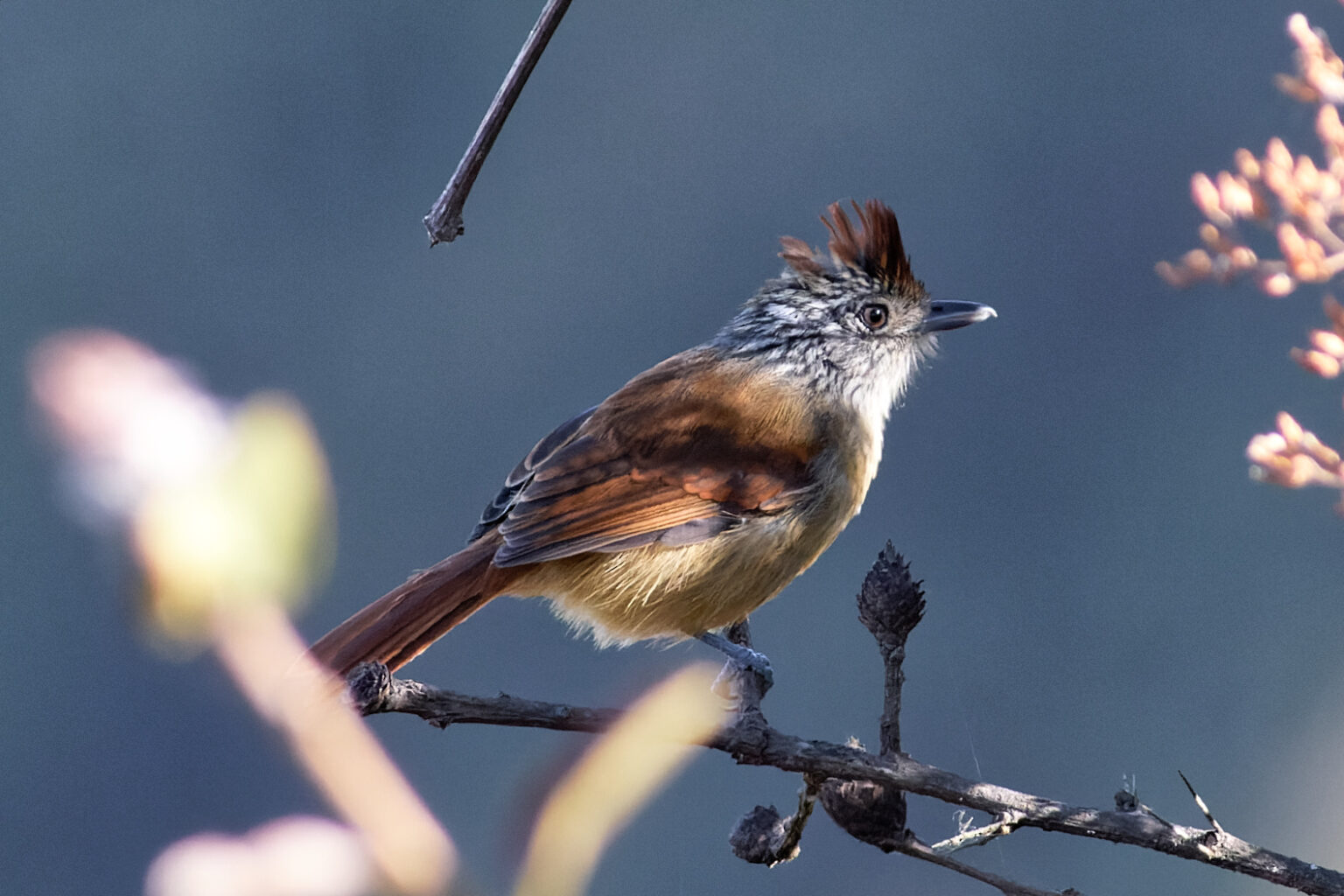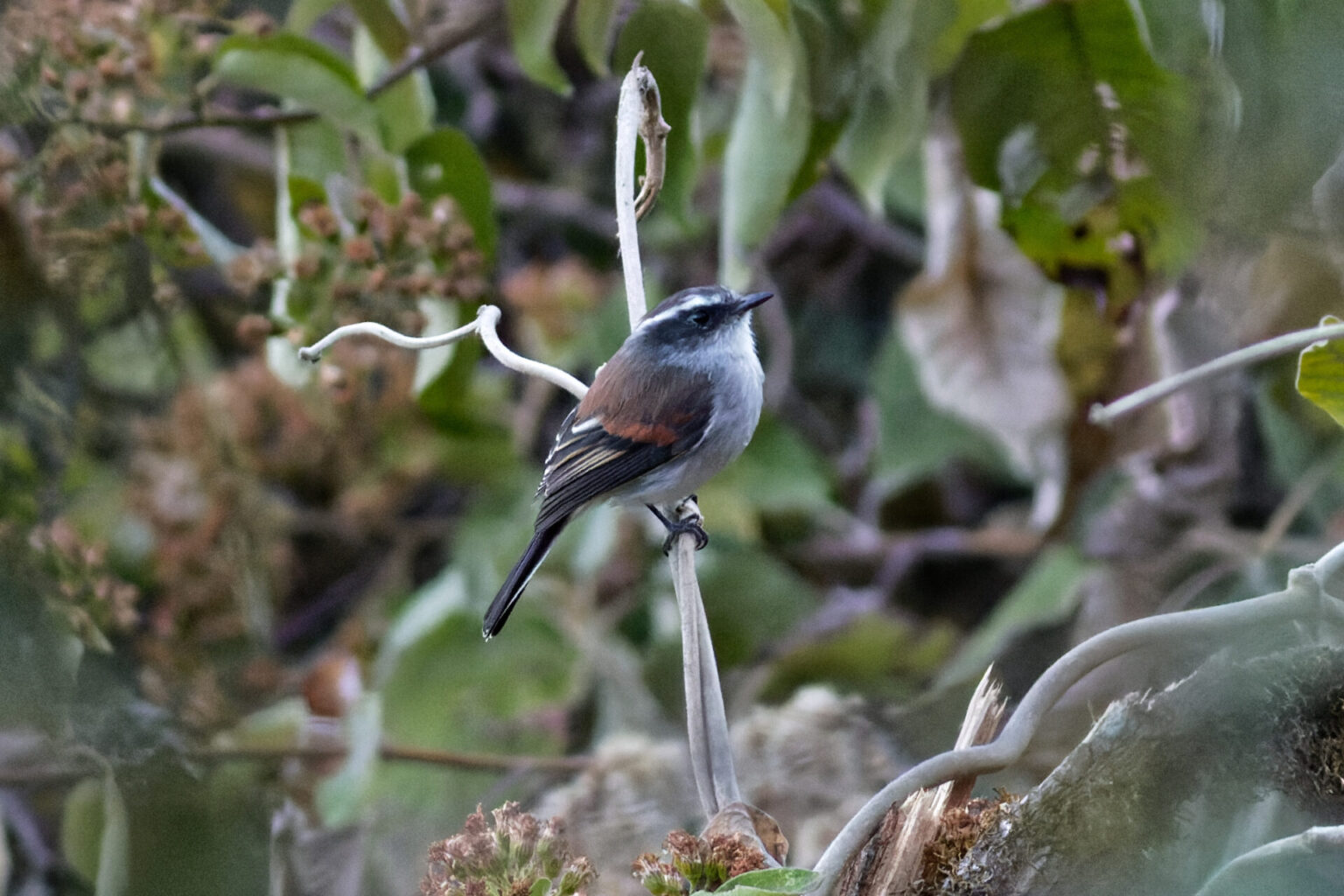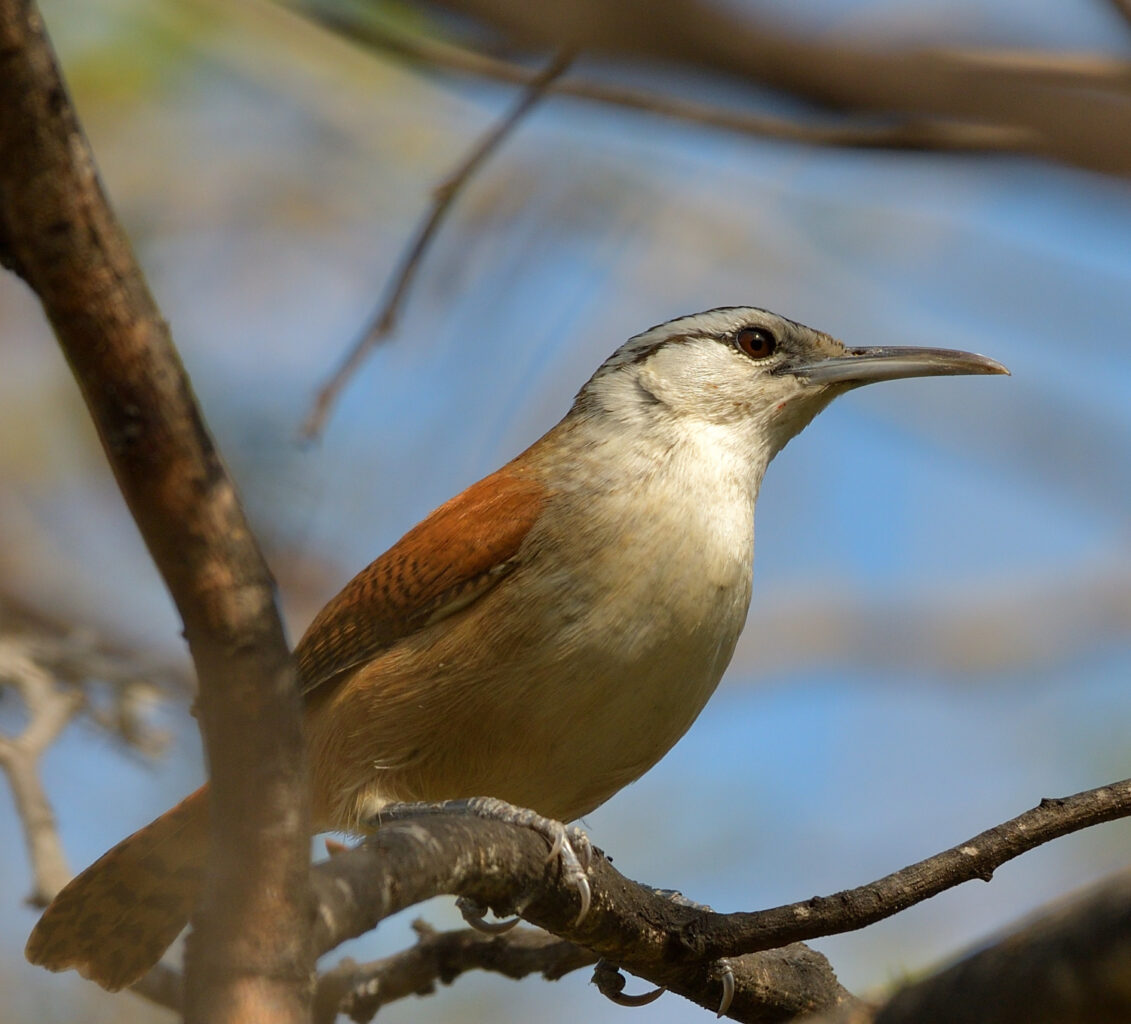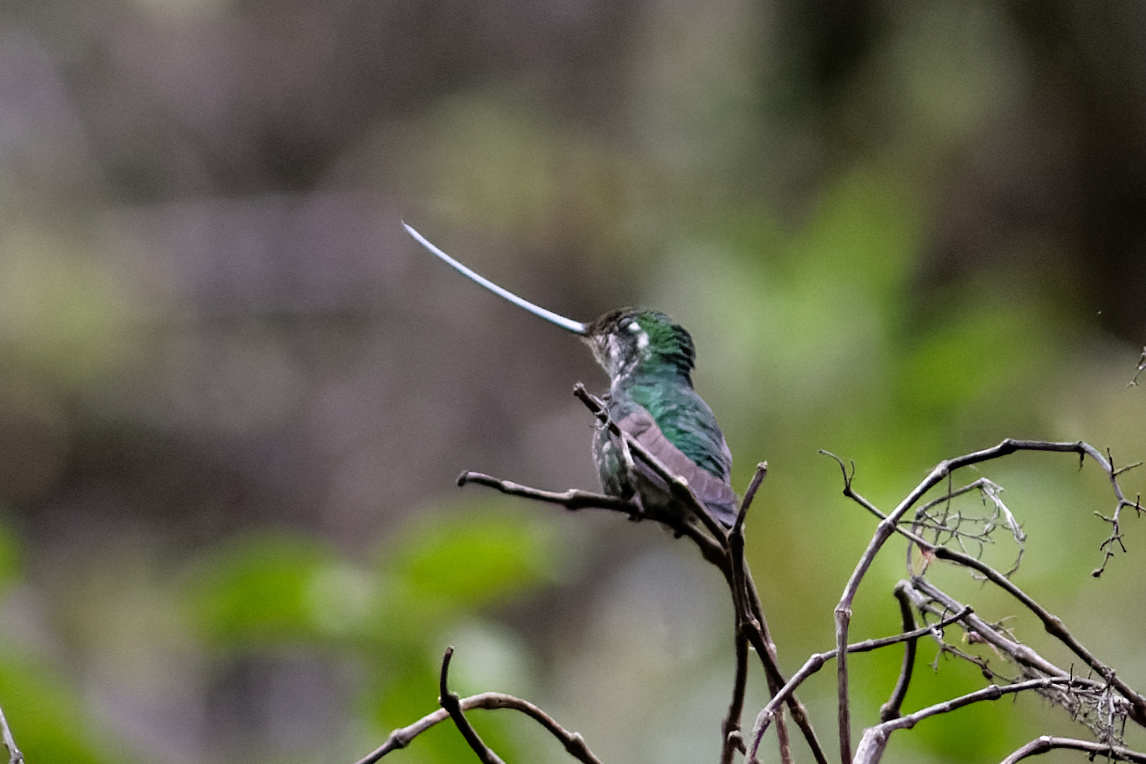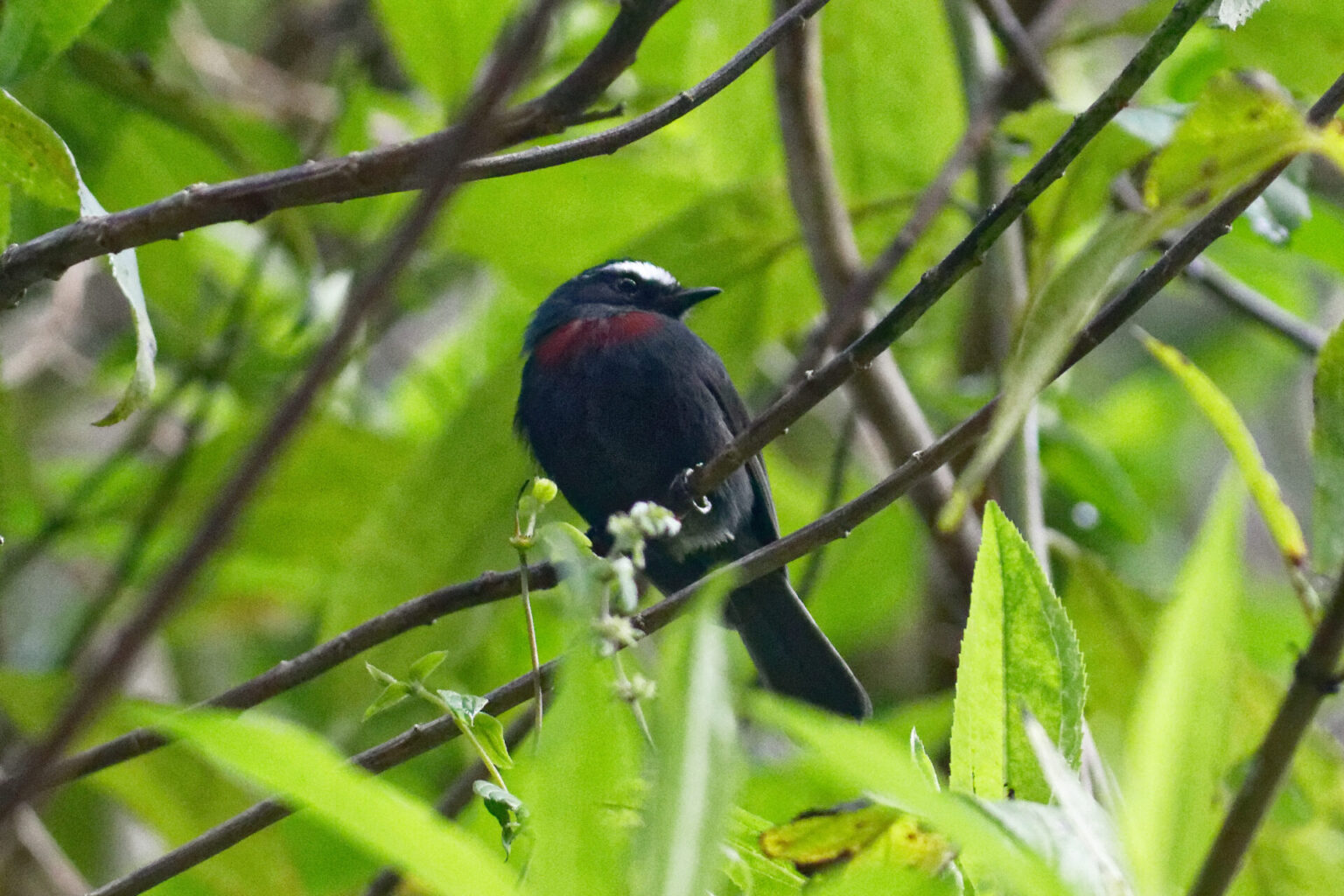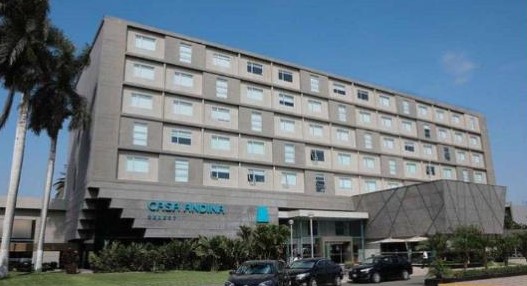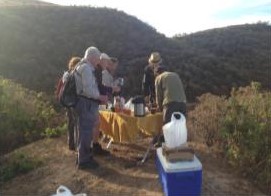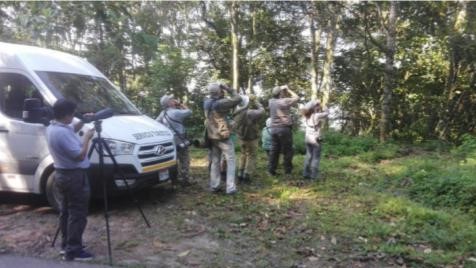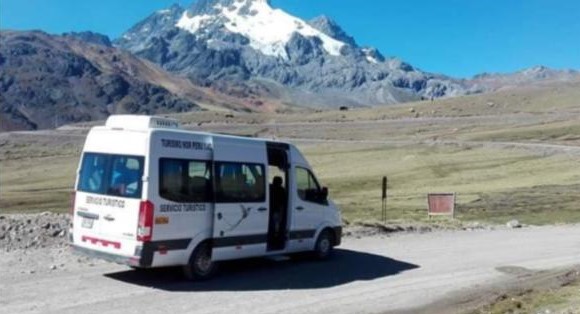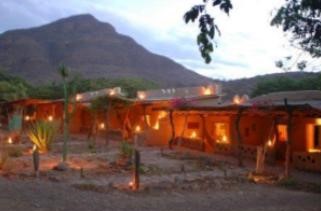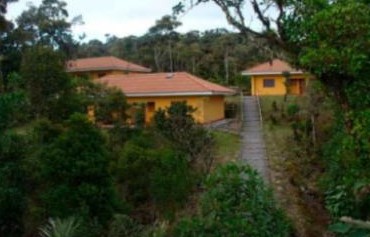Birding the Wonders of Northern Peru
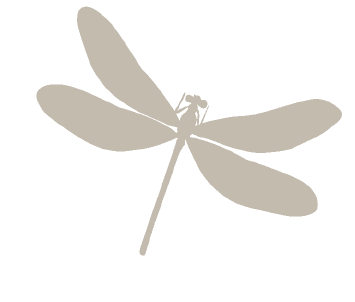
Northern Peru: Birding along the Andes
September 22 - October 5, 2024
$4,950 | ($500 deposit due upon registration)
Single Supplement: $600
9 participants max
N
orthern Peru is a study in contrasts, with arid coastal areas, lush, high elevation cloudforest and rich Amazonian lowlands. By virture of its varied geography, it is home to an amazing diversity of birds, including a staggering number of avian (and nonavian!) endemics. Tumbesian specialties like Tumbes Tyrant, Marañón Valley endemics such Marañón Crescentchest and quite a few species only recently described to science, like the near mythical Long-whiskered Owlet.
The Birding Northern Peru tour is designed to be for a smaller group (7-9 people) and will be a more focused birding experience than some other NBNC trips, with some basic accommodations mixed with more upscale lodging. Our adventure will start and end in Lima, but our birding route will basically start in Tarapoto in the Amazon Basin and end on the coast near Chiclayo (north of Lima). The birding will be breathtaking, with a dizzying variety of birds, such as the Marvelous Spatuletail (arguably the world’s most incredible hummingbird!), White-winged Guan, Peruvian Plantcutter (a cotinga) and Royal Sunangel.
Additional Information
(Click each tab to expand)
Flow of the Day: The itinerary is designed to maximize our experience with the great diversity of birdlife and ecosystems that Brazil offers. We won’t, however, be rushing from place to place to chase the largest species list possible. Our goal is to spend time appreciating the species we encounter at an enjoyable pace. Birding walks begin in the early morning, and we travel slowly to allow for the best bird and wildlife encounters.
Afternoon plans sometimes allow for some afternoon rest time at the lodges, though this is not always feasible when we are transferring between lodges and landscapes.
Climate: This trip will be exploring a wide range of habitats, regions, and elevations. As such, we may encounter a wide range of temperatures, including nights and mornings in the low 50s or even 40s, and daytime temperatures in the 70s and 80s. Be prepared for inclement weather from time to time.
Clothing: Pack light field clothing of neutral colors. Bring several pairs of long pants and comfortable, light, airy shirts. Long-sleeved (relaxed fit) shirts are useful for protection from the sun, as is a light hat or cap. Good rain gear is essential, and a small umbrella is also recommended. Be sure to have a pair of comfortable walking shoes or hiking boots, plus a second pair of tennis shoes or sandals. A sweater or fleece is important. You may want more casual clothing for traveling or dinners. A small washcloth and handkerchiefs will be helpful.
Equipment: Bring a pair of binoculars, a field guide and a camera with extra batteries. The guides will have two spotting scopes. Pack sunglasses and sunscreen, a small flashlight or headlamp, a small alarm clock (a smartphone will work), insect repellent, a small daypack, and a small folding stool if you get tired standing for long periods observing birds and other wildlife. We will also supply a lengthier suggested packing list.
Health Considerations: Please consult your physician before the trip for any recommended immunizations. Mosquitoes can sometimes be a nuisance. We suggest a stick-type repellent for your face and hands, plus at least one pump-style container of repellent for your clothing. As for foods, safe bottled water is provided while on tours. All meals will be safe to eat, and your guides will alert you to any occasions when certain menu items should be avoided.
Participants should be able to hike on moderate terrain up to 3 miles per day, and be ready to expect conditions that may be hot, cold, dry, wet, or anything in-between.
Transportation: The land transportation is in a comfortable minibus. Given the large distances we’ll be covering, there will also be some in-country flights arranged by NBNC and our Peru trip partners.
Our NBNC guide is NBNC's Birding Ambassador and "emeritus" Executive Director Chip Darmstadt. Chip has guided NBNC excursions to Nicaragua, Costa Rica, Spain, Ecuador, Argentina, as well as stateside locations like Magee Marsh and Cape May for over 25 years. When not occupied with his varied NBNC duties, Chip works on extending his streak of over 1,400 consecutive days of eBird checklists!
Our in-country guide, Rudy Gelis, was awarded a Thomas J. Watson Fellowship in 1997 and began his career studying nesting Andean Condors in Argentina and penguins on the Falkland Islands. He has been a resident of Ecuador for more than 20 years. He is a highly qualified ornithologist and has collaborated in numerous publications, in Ecuador has studied the nests and breeding behavior of Fiery-throated Fruiteaters, Long-wattled Umbrellabirds, the Barred Hawk, and five species of Antpitta, amongst others. His diverse experiences include surveying breeding birds in the U.S. and parrot and macaw use of clay-licks in Peru. Rudy leads birding and natural history tours throughout much of Ecuador. He is the top contributor for Ecuador to the California of Sciences, “Citizen Science; Project Naturalist”. His more than one thousand photographic images of wild orchids of Ecuador is a lifetime achievement and this number grows continually. He is the author of an upcoming book, ‘Walking Mindo: A Guide to Wild Orchids of Town and Farms’, and he helped coordinate “The Global Big Day” (Cornell University and E’Bird) a bird count which in 2015 was won by Ecuador with 431 species in 24 hours. Rudy has guided several NBNC birding trips around South America over the last 15 years!
Accommodation in Peru include small comfortable hotels, which may lack the amenities of more luxurious establishments but compensate by being in ideal locations. Elsewhere we stay in tourist class hotels throughout. Accommodations is in twin-bedded rooms with private facilities but single rooms may be available on request.
The trip cost includes:
- Pre-departure orientation gathering (virtual)
- Expert NBNC guide
- In-country, English-speaking bird guide
- Use of high-quality binoculars and spotting scopes
- All accommodations
- All meals
- Entrance fees to parks
- Comfortable private transportation throughout the trip
- Airport transfers
- Bottled water, available at all times
- Domestic flights within Peru
The trip cost does not include:
- International airfare to/from Lima
- Transportation to/from airports in the US
- Cancellation (trip) insurance
- Alcoholic beverages
- snacks and other incidentals
- Extra hotel services, such as laundry
- Guide gratuities
Ready to go to Peru?
Email [email protected] to get signed up.
Payment Schedule
- A $500 deposit is required to reserve your space on the trip.
- 50% of the trip balance will be due 6 months before the departure date.
- Single travelers must include the single supplement fee ($600) with this payment. Single rooms are limited on this itinerary, so please confirm with us that your request for a single room can be accommodated before sending payment.
- The remaining trip balance will be due 3 months before the departure date.
All payments can be made via check to: North Branch Nature Center, 713 Elm Street, Montpelier, VT 05602
Cancellation Policies
We understand that incidents and emergencies arise that may force you to cancel your trip. However, NBNC invests considerable time and, in many cases, non-refundable payments to lodges and local contractors to secure our rooms and programming. NBNC aims to be as flexible as possible in our refund policy, but a full refund of your payments may not be possible after the dates indicated. All cancellations must be made via email to NBNC.
-
Cancellation more than 180 days before the trip: Full refund of all payments.
-
Cancellation 90-180 days before the trip: Refund of any payments minus the $500 deposit. If your space is filled by another traveler, we will also refund your deposit.
-
Cancellation 30-90 days before the trip: No refund guaranteed. If your space is filled by another traveler, we will provide a full refund minus the $500 deposit.
-
Cancellation less than 30 days before the trip: No refunds guaranteed.
Itinerary
(Click each tab to expand)
We will arrive in Lima this the evening, staying at Hotel Costa del Sol overnight. We will be in touch as the trip approaches with recommended flights from the U.S. You can expect our team to arrange your transfer from the Lima airport to our lodging.
We’ll rise early for an early flight to Tarapoto. Known as the city of palms, Tarapoto is located at an altitude of 353 meters (1,150 feet) above sea level. It has a cooler climate than other major cities in the Peruvian Amazon with a daily average temperature of 25 °C (77 °F). We start our birding with a visit to the Cordillera Escalera Regional Conservation Area. There we explore part of the mountain range known as Cahuapayas, the youngest (geologically) range found in the Peruvian eastern Andes, and which has a decidedly cloud forest aspect.
After lunch at the restaurant El Mono y La Gata (where we can enjoy some more birds over lunch), we head to the Association for the Conservation of Birds and Biodiversity Koepcke's Hermit (ACONABIKH), located 25 km from the city of Tarapoto on the road to Yurimaguas. The reserve protects 40 hectares of rainforest and is between 700 and 900 meters above sea level). Among the many birds we’ll enjoy are Plumbeous Euphonia, Dotted Tanager, Koepcke’s Hermit, Rufous Potoo, Gould’s Jewelfront, Fiery-capped Manakin, Paradise Tanager and, if we’re lucky, White-plumed Antbird and Curl-crested Aracari (rare!). Koepcke’s Hermit, named for German ornthologist Maria Koepcke, is a Peruvian endemic found only in foothill forests along the eastern slope of the Andes.
Overnight in Tarapoto at the Hotel Cumbaza
Before heading to Waqanki, we visit the Ricuricocha lagoon where we spend the morning exploring this rich, seasonally-flooded habitat. The lagoon is very close to Tarapoto and attracts species characteristic of the Amazon Basin. The bizarre Comb Duck, and the even stranger Hoatzin, are a good possibility. An impressive number of rail species are also possible, including Russet-crowned Crake, Chestnut-headed Crake, Rufous-sided Crake, Grey-breasted Crake and Spotted Rail, not to mention the more conspicuous Purple Gallinule and Gray-cowled Wood-Rail.
Our ultimate destination today is Moyobamba and Waqanki Lodge, where we spend the next two nights. Moyobamba, known as the city of orchids, is located at an altitude of 860m (2,800 ft). It has one of the most pleasant climates in the entire Peruvian jungle, with an average temperature is 22°C (72°F). Waqanqi is a private family-run reserve in the Mayo Valley on the outskirts of Moyobamba. Waqanki provides access to a large variety of habitats, including excellent hill forest on outlying ridges, sandy-soil forests, and savannah/scrub. The lodge features a delightful orchid garden, trails, and a hummingbird garden with many flowering bushes, hummingbird feeders, and a three-story observation tower. Over 25 hummingbird species have been recorded here so far, including the diminutive and flamboyant Rufous-crested Coquette. Other birds we’ll seek out in this part of Peru include Black-bellied Tanager, Oilbird, Planalto Hermit, Yellow-tufted Woodpecker, Varzea Thrush (only described to science in 2012!), Rufescent Screech-Owl, Rufous Potoo, Ash-throated Antwren, Stripe-chested Antwren, Foothill Antwren, Fiery-throated Fruiteater, White-bellied Pygmy-Tyrant, Striped Manakin and Black-and-white Tody-Flycatcher.
Overnight Waqanki Lodge
This morning we head to the Mishquiyaquillo Ravine (aka Quebrada Mishquiyacu) where we will spend the whole morning birding. The path is a bit steep, but accessible and very birdy. Some of the special birds we’ll be looking for include Ornate Antwren, Black-and-white Tody-Flycatcher, Cinereous-breasted Spinetail, Varzea Thrush, Red-shouldered Tanager, Speckle-chested Piculet and the recently described Painted Manakin. The endangered Ash-throated Antwren is also found here, but involves a very long and challenging hike to find it, so this might be an optional excursion for some avid hikers. On our way back to Waqanki we may stop at a local lagoon to observe Masked Duck.
After lunch at Waqanki, we head to Morro de Calzada (1430 m). Morro de Calzada is a fairly small reserve on an isolated hill above the flat plains around Moyobamba. The general area is composed of evergreen forest, open grasslands with scattered trees and second growth scrub. Morro de Calzada is a good location for difficult to find species, such as Great-billed Seedfinch, Stripe-necked, Pearly-vented, and Buff-throated Tody-Tyrants, Mishana Tyrannulet, Fiery-capped Manakin, Black-faced Tanager, Pale-breasted Thrush, and Red-shouldered Tanager. Cinereus-breasted Spinetail, Buff-breasted Tody-Tyrant, and Wedge-tailed Grass Finch can be found at or near the top of Morro de Calzada.
Overnight Waqanki Lodge
First thing this morning we head to the Arena Blanca reserve, an area of very humid tropical premontane forest. The reserve is a private conservation area in the town of Aguas Verdes. An observation platform here overlooks many flowering plants and hummingbird feeders, attracting Wire-crested Thorntail, Rufous-crested Coquette, White-bellied Woodstar, Golden-tailed Sapphire and Black-throated Sunangel. And while we’re on the subject of hummingbirds, Gray-breasted Sabrewing, Long-billed Starthroat, Many-spotted Hummingbird, Black-throated Brilliant and Sapphire-spangled Emerald are also possibilities! If, and when, we’ve had our fill of hummers, the fruit and seed feeders attract Magpie Tanager, Burnished-buff Tanager, Rufous-breasted Wood-Quail and Little Tinamou.
Later in the afternoon, we arrive at the Owlet Lodge, a spacious lodge owned by ECOAN (Association of Andean Ecosystems), located within the Abra Patricia Private Reserve (2,300 m). Once we check into our rooms we can enjoy the action at the hummingbird feeders until dinner time.
Overnight Owlet Lodge
This morning we explore the wonderful trails of Abra Patricia. The Abra Patricia Reserve spans over 25,000 acres of cloud forests in the Amazonas department of northern Peru. The area’s bird list includes over 300 species including many endemic to Peru, 23 of which are considered globally threatened. Abra Patricia is designated as an Alliance for Zero Extinction site, due to the presence of the Long-whiskered Owlet and Ochre-fronted Antpitta – both species classified as endangered. Other rare, threatened birds include the Royal Sunangel, Johnson’s Tody-Tyrant, and Ochre-breasted Tody-Tyrant. Several songbirds that breed in North America such as Swainson’s Thrush, Blackburnian Warbler, and Cerulean Warbler winter in the forests here as well. Abra Patricia is also home to the Critically Endangered Yellow-tailed Woolly Monkey and a diversity of other wildlife and rare orchids.
Abra Patricia Reserve is managed by the Peruvian conservation organization Asociación Ecosistemas Andinos (ECOAN). American Bird Conservancy worked with ECOAN to establish this reserve in 2005, develop tourism infrastructure and expand the reserve since. Tourism profits are reinvested by ECOAN into reserve management and conservation projects.
After lunch at the Owlet Lodge, we hit the trails again and explore the roadside portions of the Alto Mayo Protection Forest. This extensive wooded presereve covers 182,000 hectares, providing invaluable protection for the local watershed. Night birding at Owlet Lodge is excellent, with Rufous-banded Owl, White-throated Screech-Owl, Andean and Common Potoos, and various nightjars and nighthawks also possible. Long-whiskered Owlets and Cinnamon Screech-Owls are regularly heard and seen during night walks guided by ECOAN staff.
Overnight Owlet Lodge
This morning we once again explore the trails at Abra Patricia. There are sure to be more avian delights to discover! Inca Flycatcher, Royal Sunangel, Ochre-fronted Antpitta, Rusty-tinged Antpitta, White-faced Nunbird, Red-hooded Tanager, Yellow-scarfed Tanager, Black-throated Tody-Tyrant, Cinnamon-breasted Tody-Tyrant, Sword-billed Hummingbird, Emerald-bellied Puffleg, Streaked Tuftedcheek, Crimson-mantled Woodpecker and White-capped Tanager are just a few of the possibilities.
Later in the day we head towards the Pomacochas Lagoon and our next lodging, located at 2,257 meters above sea level, in the humid montane forest of the high jungle. If time allows, we can search for Puna Snipe and Plumbeous Rail around Pomcochas.
Overnight Hotel Mirador del Puma
We’ll spend the morning on the rugged but accessible San Lorenzo trails, hiking approximately 3 to 4 hours between ascent and descent. Among the many birds we hope to see include the rare Pale-billed Antpitta, an odd looking, range restricted antpitta species of bamboo stands in the cloud forest. Rusty-tinged and Leymebamba Antpitta are also found here. We also hope to many other goodies including, Rufous-capped Thornbill, Coppery Metaltail, Violet-throated Starfrontlet, Speckle-chested Piculet, Trilling and Large-footed Tapaculo, Russet-mantled Softtail, Inca Flycatcher, Johnson's Tody-Flycatcher, Unstreaked Tit-Tyrant, Rufous-webbed Bush-Tyrant, White-collared Jay, Yellow-throated Tanager, Moustached and Black-throated Flowerpiercer.
After lunch we head to Huembo Lodge, where we dedicate all afternoon to observing the hummingbirds at the feeders of the lodge, including the spectacular Marvelous Spatuletail! Of course, there will be other notable hummers at the feeders to oogle, including Little Woodstar, Chestnut-breasted Coronet, Violet-fronted Brilliant, and Bronzy Inca. In addition to the hummingbird show we may see Peruvian Pigeon, Andean Guan, Silvery Tanager, Blue-capped Tanager, Mitred Parakeet and the unbelievable Red-ruffed Fruitcrow. Undulated Antpitta is now habituated to worms and may come out on the trail for us to catch a glimpse.
Overnight Hotel Mirador del Puma
Today we bird our way to the city of Jaén, observing birds with frequent stops along the road and seeking out the specialities of the dry Marañon Valley. Marañon Thrush, Koepcke´s Screech-Owl, Black-necked Woodpecker, Little Woodstar, Spot-throated Hummingbird, Peruvian Wren, and Little Inca-Finch are all possibilities. Birding near Jaen after lunch, we’ll be on the look out for Marañon Crescentchest, Marañon Slaty-Antshrike and Chinchipe Spinetail. The area around Jaén offers several birding sites all promising for Marañon endemics and other species. Other special birds we may encounter include Peruvian Pigeon, Chestnut-backed Thornbird, Necklaced Spinetail and Speckle-breasted Wren.
Overnight the Urqu hotel, Jaen
An early start this morning, as we head to the Yanahuanca Forest, a private reserve which protects endemic species of flora and fauna of the seasonally dry tropical forests of the Marañón-Chinchipe Valley. It is located 30 minutes away from Jaén, at a height between 810- 950 m (2,700 ft). A local family own this cactus-rich thorn forest and visitors are welcome to explore the trails (with prior permission). Some of the highlights include the endemic Spot-throated Hummingbird, the range-restricted Little Inca-Finch and the critically endangered and endemic Marañón Spinetail. More commonly seen are Fulvous-faced Scrub-Tyrant, Rufous-fronted Thornbird, Pale-legged Hornero, Chinchipe Spinetail and Scrub Nightjar.
After lunch we’ll explore Abra Porculla, the lowest east-west pass in the Peruvian Andes at 2,150m (7,050 ft). At this elevation we’ll see a whole new suite of birds, Piura Chat-Tyrant, Ochre-bellied Dove, Black-cowled Saltator, Bare-faced Ground Dove and maybe Andean Condor if we’re lucky, or a Pale-browed Tinamou.
Overnight Hotel El Maracuya
This morning we head towards the Bosque de Pomac Historic Sanctuary, an important protected natural area (5,887 hectares) in the region. It contains the most extensive stands of carob forest in the world and hosts a variety of different habitats including Acacia forest and arid chaparral forest. Here we are in the heart of the Tumbesian endemic area! Birding Pomac will give us our first chance to find the endangered Peruvian Plantcutter, as well as other interesting species including Ecuadorian Piculet, Tumbes Chat-Tyrant, Short-tailed Field Tyrant, Snowy-throated Kingbird, and Tumbes Sparrow. Other birds of note include Short-tailed Woodstar, Tumbes Hummingbird, Amazilia Hummingbird, Oasis Hummingbird, Necklaced Spinetail, Tumbesian Tyrannulet, Collared Antshrike, White-tailed Jay and White-edged Oriole, Tumbes Tyrant. With luck we’ll see the rare and local Tumbes Swallow, often observed flying above the forest of the reserve. Our challenge today will be to see how many species we can observe with Tumbes in its name!
After lunch in the city of Lambayeque, we head to the beach to explore coastal wetlands, sand dunes and the Pacific Ocean near Punta Eten. We’re sure to see some new birds for the trip, including Peruvian and Blue-footed Boobies, Chilean Flamingo, White-tufted Grebe, Wren-like Rushbird, and Many-coloured Rush-Tyrant.
Overnight Chaparri Lodge
The Chaparri Private Conservation Area was established by the local community of Santa Catalina de Chongoyape in 2000. The community established the reserve to protect their natural resources and to allow them to seek for sustainable alternatives to reduce poverty and improve standards of living in the area. The community embarked upon this integrated conservation development approach under their own initiative and with the support of a local conservation development organization, Asociacion Naymlap.
After breakfast at our lodge we explore the Chaparrí reserve. The endangered White-winged Guan, Tumbes Tyrant, Tumbes hummingbird, Tumbes swift, Elegant Crescentchest, Scarlet-backed Woodpecker, White-headed Brush-Finch and Sulphur-throated Finch are just some of the birds we hope to observe. After lunch at the Lodge, we’ll bird the lower part of the reserve. If we have the energy, night birding walk along the main track may produce Scrub Nightjar, Pacific Pygmy-Owl and West Peruvian Screech-Owl.
Overnight Chaparri Lodge
This morning we head up in elevation from Chaparri, birding the Casupe road with breakfast on route. The cloud forest here hosts many species found only in northwestern Peru and southwestern Ecuador, including Guayaquil Woodpecker, Henna-hooded Foliage-gleaner, Rufous-necked Foliage-gleaner, Piura Chat-Tyrant, Chapman's Antshrike, Black-cowled Saltator, Ecuadorian Trogon, Ecuadorian Piculet, Plumbeous-backed Thrush, Gray-and-gold Warbler, Black-capped Sparrow and Elegant Crescentchest.
After lunch in the field, we continue to Bosque Rafan near the coast. Bosque Rafan is one of the few remaining relics of the forest type that used to be typical of this region. It’s also a reliable location for the rare and endangered (and endemic!) Peruvian Plantcutter. We’ll likely see many new birds for the trip here, including Peruvian Sheartail, Scarlet-backed Woodpecker, Pacific Parrotlet, Tumbesian Tyrannulet, Cinereous Finch, Gray-and-White Tyrannulet, Necklaced Spinetail, Superciliated Wren and Rufous Flycatcher. Rufous Flycatcher is atypical for the Myiarchus flycatcher genus (like Great Crested Flycatcher), being almost solidly rufous. It’s a beauty! A short stop along the coast may yield a variety of shorebirds, Peruvian Tern, Peruvian Booby, Peruvian Pelican, and Inca Tern (with some luck!). The adjacent fields may host Least Seedsnipe and Tawny-throated Dotterel.
Overnight Hotel Costa Del Sol Chiclayo
Today we take return flights to Lima with some birding possible in the morning, depending on flight times, then catch our international flights back home.

713 Elm Street
Montpelier, Vermont 05602
(802) 229-6206
Hours: Center Open Monday-Friday 9-4
Trails Open 24/7


